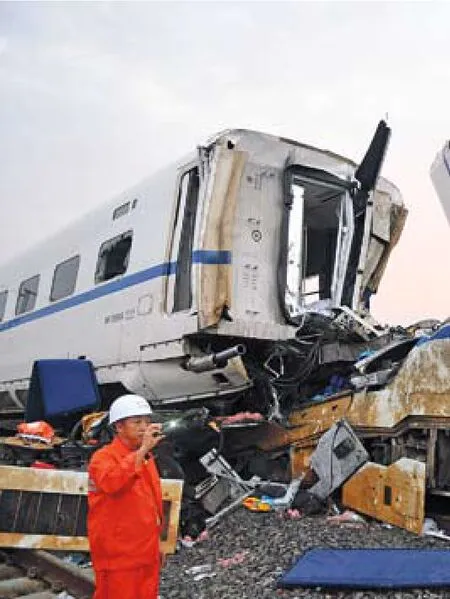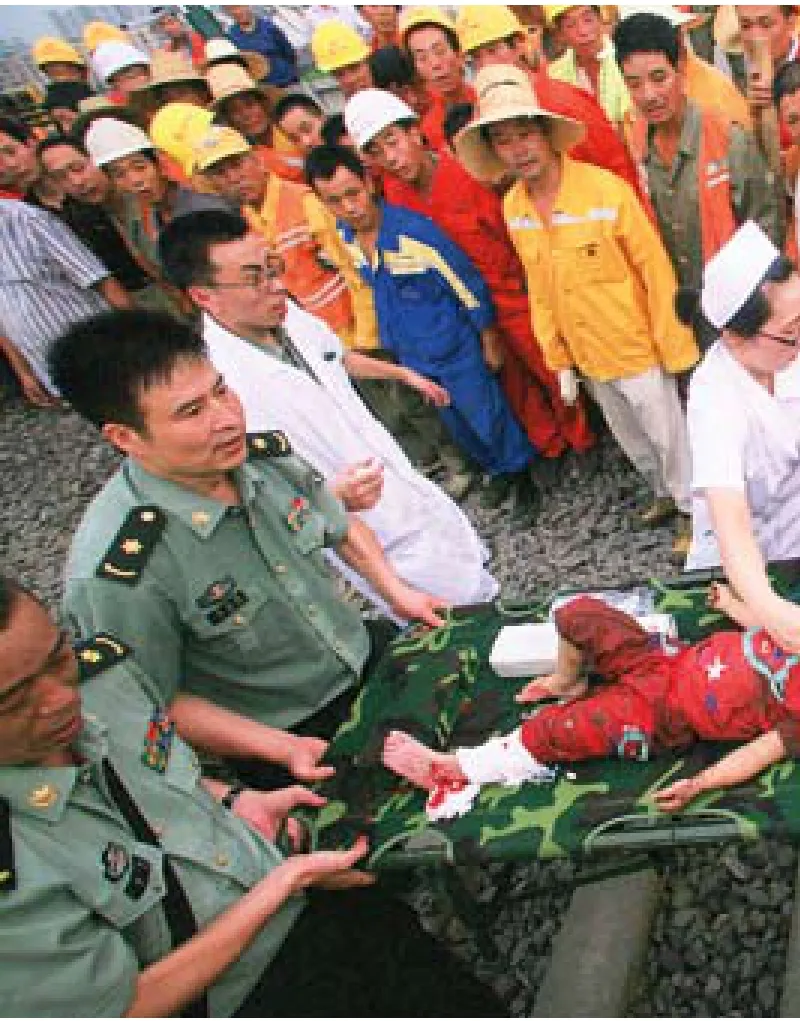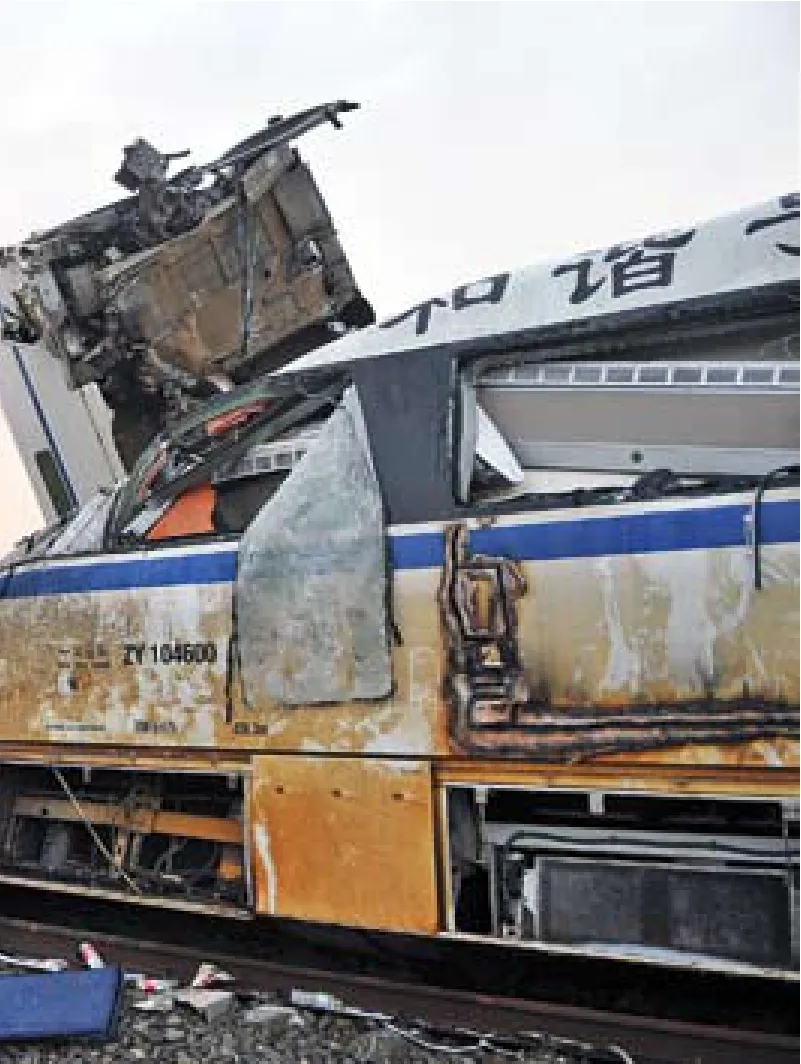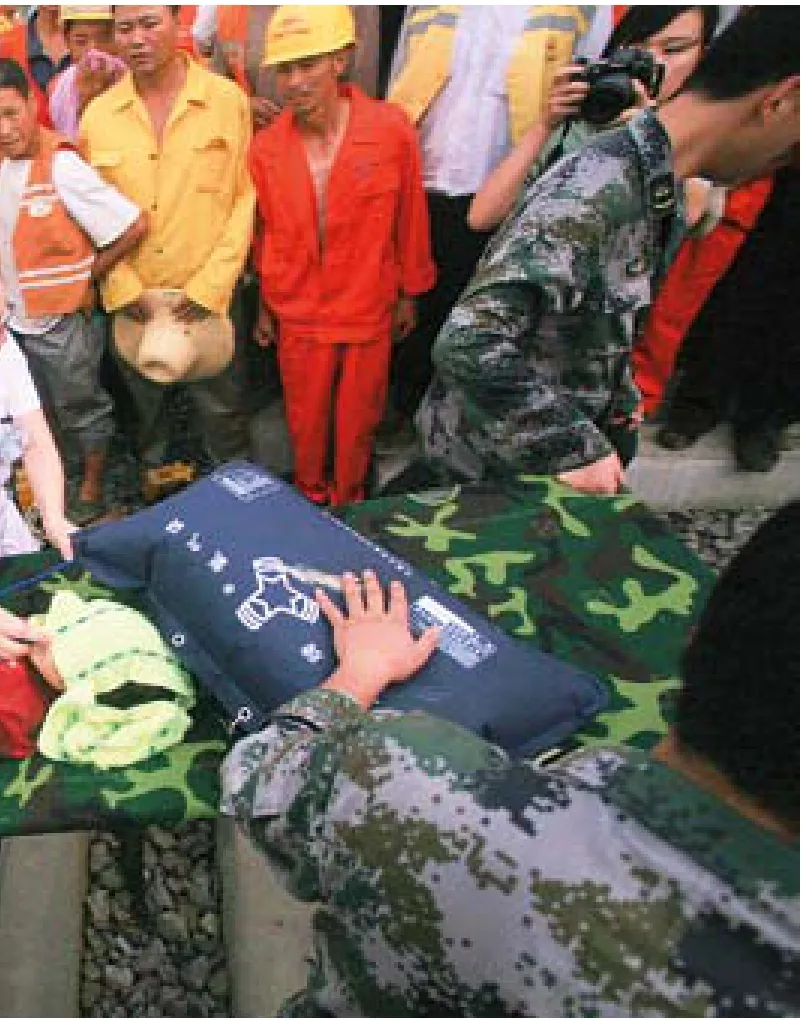A Deadly Crash
2011-10-14ByYINPUMIN
By YIN PUMIN
A Deadly Crash
By YIN PUMIN
Train accident raises concerns about the safety of China’s high-speed trains
Design faws in railway signal equipment have been blamed for the July 23 train collision near Wenzhou in east China’s Zhejiang Province.
Having been struck by lightning, the signal system at Wenzhou South Railway Station failed to turn the green light to red, which caused the rear-end collision, said An Lusheng, Director of the Shanghai Railways Bureau, at an investigation meeting on July 28.
The signal equipment was designed by a Beijing-based research and design institute and was put into use in September 2009, An said.
The accident occurred on a viaduct in the vicinity of Wenzhou when high-speed train D301 from Beijing to Fuzhou, in southeastern Fujian Province, rear-ended bullet train D3115, running from Hangzhou in Zhejiang to Fuzhou, which had lost power and stalled after being struck by lightning.
The first four coaches of the D301 fell off the viaduct on to the ground below, while the last two coaches of the D3115 derailed without falling off the bridge.
Sources with the Ministry of Railways (MOR) said 1,072 people were on the D3115 and 558 on D301 when the accident took place.
Local authorities said on July 26 the accident had left at least 39 people dead and 192 others injured.
Local authorities have released the names of 39 people confirmed dead in the July 23 train collision near Wenzhou in east China’s Zhejiang Province. Among them are Liguori Assunta, an Italian national, and Cao Erxing and Chen Zengrong, two Chinese Americans.
When visiting the site of the crash on July 28, Premier Wen Jiabao said the State Council had set up an independent investigation group to look into the causes of the accident.
The premier promised the investigation will be “open, transparent” and “under public supervision” to ensure its result can stand the test of history.
“We will severely punish those who are responsible for the accident, as well as those who hold responsibilities of leadership, in accordance with the law,” Wen said.
Sparing no effort
Shortly after the accident, top Chinese leaders, including President Hu Jintao and Premier Wen, ordered an all-out effort to rescue passengers.
The Zhejiang Provincial Department of Health rushed four medical teams from the province’s leading hospitals to the site. On July 26, 126 of the injured were still being treated in 11 hospitals in Wenzhou, and 12 patients were in critical condition, said local offcials.
Xiang Weiyi, a 2-year-old girl who was pulled alive from the wreckage 21 hours after the collision, showed good vital signs after her first surgery, but it is now known she lost her parents in the disaster.
An official in charge of the Wenzhou blood bank said on July 23 many of the injured passengers had lost blood and needed transfusions. The blood bank was appealing for donations from cities nearby, as well as from local residents. Upon hearing this, thousands of Wenzhou residents flocked to blood banks to donate.
Health offcials said they were confdent blood stocks were adequate to cope with the demand following the rail disaster.
Late on July 24, Minister of Railways Sheng Guangzu and MOR spokesman Wang Yongping apologized to victims of the collision and their families.
Wang also revealed three railway officials had been fired as a result of the collision and these offcials would be subject to an investigation.
The officials sacked were Long Jing, Director of the Shanghai Railways Bureau, Li Jia, Party chief of the bureau, and He Shengli, Deputy Director of the bureau.
The MOR has promised to pay the families of the deceased 500,000 yuan ($77,640) each in compensation.
Tracing causes
On July 28, the investigation group established by the State Council held a plenary meeting in Wenzhou. Luo Lin, head of the group and Minister of the State Administration of Work Safety, said a comprehensive investigation into the cause of the train crash had been launched.
In addition to discovering the causes behind the train crash, investigators will also suggest punishments for those held responsible for the tragedy. They have also been tasked with introducing new measures to prevent future accidents.


Luo said he expected the results of the probe to be made public in mid-September.
To ensure the Wenzhou disaster is not repeated the MOR has ordered a two-month safety check on railway operations. “The safety campaign will focus on implementing maintenance standards and reinforcing checks on power connections to prevent outages on high speed lines,” said Minister Sheng.
Going beyond railways the State Council has decided to launch a nationwide campaign to improve the general standard of work safety in the country. The campaign will focus on areas such as transportation, coal mining, construction and the hazardous chemical industry.

JU hUANZONG

ChEN XIANG
“The campaign aims to detect and remove potential dangers through comprehensive and thorough inspections of railways, roads, bridges, coalmines and buildings that are currently under construction,” said a statement released by the State Council on July 27.
Despite the Wenzhou accident, MOR spokesman Wang said China’s high-speed rail technology was “advanced and up to international standards.”
But his reassurance seems to have had little effect on the public’s shattered confdence.
According to an online survey by news portal Ifeng.com, more than 54 percent of the 251,000 people polled said they would not take high-speed trains, at least in the short term. Only 15 percent said they believed the service was safe.
Industry experts also warned the accident might undermine China’s plans to export high-speed rail technology.
China has made strides in recent years tapping the global high-speed rail market. It has signed agreements with more than 30 countries since 2003, including the United States, Russia, Brazil, Saudi Arabia, Turkey, Poland and India.
“China’s railway’s export business will be negatively affected as overseas clients may doubt our quality,” said Yang Hao, a transportation professor at Beijing Jiaotong University.
